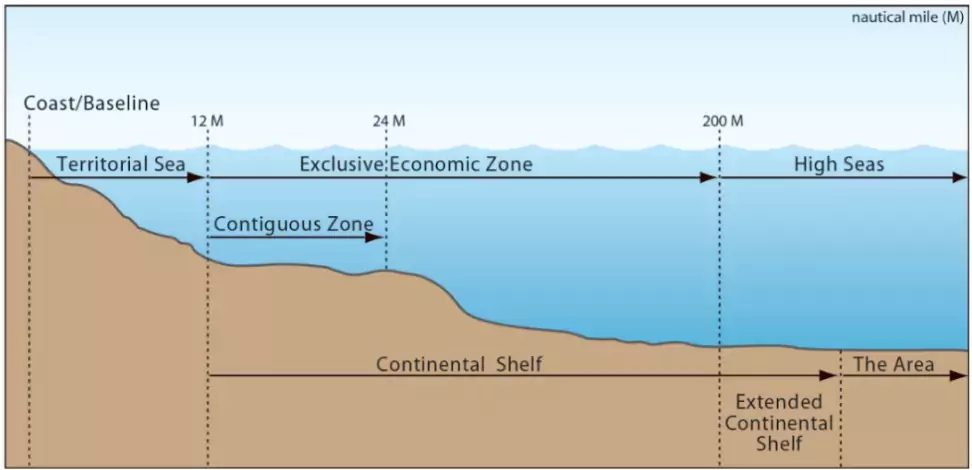Recently, Morocco became the 60th country to ratify the High Seas Treaty, marking the first international legal framework aimed at protecting biodiversity in international waters.
What are High Seas?
- According to the 1958 Geneva Convention, high seas are ocean areas lying beyond the jurisdiction of any state.
- They extend past a nation’s Exclusive Economic Zone (EEZ), which typically reaches 200 nautical miles from its coast.
What is the High Seas Treaty?
- Also Known as Biodiversity Beyond National Jurisdiction (BBNJ) Agreement
- The UN High Seas Treaty, adopted in March 2023, is a global agreement to regulate ocean areas beyond national Exclusive Economic Zones (EEZs).
- It is an international treaty under the United Nations Convention on the Law of the Sea (UNCLOS)
Key Objectives of the Treaty
- Marine Protected Areas (MPAs):
- Legal framework for creating MPAs; previously only 1.45% of high seas were protected.
- Key mechanism for achieving the “30×30” goal of protecting 30% of oceans by 2030.
- Marine Genetic Resources, including the fair & Equitable Sharing of Benefits
- Treaty governs MGRs in international waters, including Digital Sequence Information (DSI).
- Benefit-sharing includes monetary contributions (based on national income) and non-monetary transfers like technology sharing, capacity building, and joint research.
- Environmental Impact Assessments (EIAs):
- Comprehensive EIAs required for activities with potential significant impact in international waters.
- Process covers screening, scoping, assessment, public notification, and monitoring.
- Applies to national and international activities affecting high seas.
- Integrates Indigenous and traditional knowledge with scientific methods.
- Capacity Building & Technology Transfer:
- Establishes training programs, research fellowships, and institutional partnerships.
- Develops regional hubs for marine technology, fostering collaboration and local capacity.
- Ensures developing nations can participate meaningfully in high-seas governance.
Signing & Ratification
- Implementation: The treaty would become international law 120 days after at least 60 countries submit their formal ratification documents
- Global Status: As of 22nd September 2025, 143 countries have signed the High Seas Treaty.
- Ratification: So far, 60 countries have ratified it.
- India’s Position: India signed the treaty in 2024, but has not yet ratified it.
What are High Seas?
According to the 1958 Geneva Convention, high seas are ocean areas lying beyond the jurisdiction of any state. They extend past a nation’s Exclusive Economic Zone (EEZ), which typically reaches 200 nautical miles from its coast.

Significance of High Seas
- Vast Coverage: Covers more than 64% of the oceans and 43% of Earth’s surface, hosting nearly 2.2 million marine species and trillions of microorganisms.
- Environmental Regulator: Absorb 25% of global CO₂, produce half of the world’s oxygen, and balance the climate by distributing heat.
- Resource Reservoir: Provide seafood, minerals, genetic resources, and medicinal compounds vital for human use.
- Biodiversity Hub: Support rich marine life, including species still unknown to science.
- Challenges: Lack of ownership leads to overfishing, biodiversity loss, plastic dumping (17 million tonnes in 2021), acidification, and pollution.
|
![]() 22 Sep 2025
22 Sep 2025

